Dudol - A Traditional Delicacy from Paoay
Dudol – A Traditional Delicacy from Paoay, Ilocos Norte
Dudol is known for its unique texture and rich, sweet flavour. This sticky, rice-based treat is a popular snack, particularly during festivals and special occasions, and is considered a culinary heritage of the region.
Dudol is believed to have originated from Malay and Indian settlers who lived in villages in the Ilocos region long before the Spanish arrived.

The Dudol Cook-Off at Paoay’s Guling-Guling Festival
As a travel writer and blogger I’ve been privileged to experience many cultural events across the Philippines, but nothing could quite prepare me for the sweet-smelling, chaotic charm of the Dudol Cook-Off in Paoay during the Guling-Guling Festival.
This year, our team of travel writers, bloggers and vloggers invited to cover the Guling-Guling Festival by the Paoay Tourism Office, were given an extraordinary honour – we were invited to join the panel of judges for the Dudol competition, an iconic feature of the festival that celebrates not only the art of cooking but the spirit of community in this historic town.
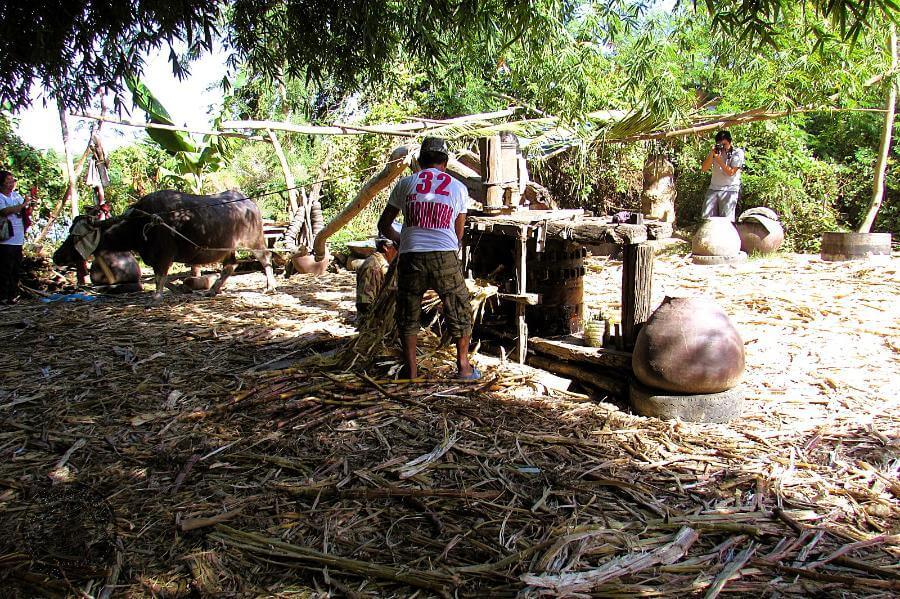
Arriving at the Guling-Guling Festival
The Guling-Guling Festival, an annual event held on Shrove Tuesday, the day before Ash Wednesday, is one of Paoay’s most vibrant celebrations. The town is famous for its ancient baroque church and the deep-rooted traditions of its people. The festival is not only a time for religious reflection but also a last burst of merriment before the solemn Lenten season begins.
We arrived at the site just outside of town early in the morning, greeted by the sight of locals dressed in colourful traditional attire. The air buzzed with excitement as the teams prepared for the competition.
A carabao harnessed to the wooden sugarcane extractor called a “dadapilan” was already working away, walking round and round in circles as the juice flowed from the sugarcane into a container.
But for us, the main event of the day was the Dudol Cook-Off, and we couldn’t wait to dive into the experience.
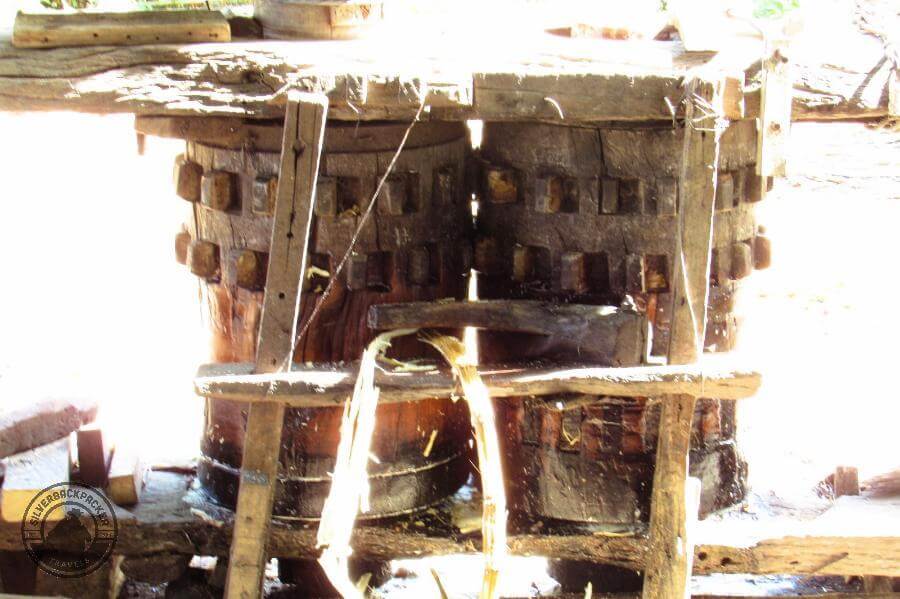
Understanding the Tradition of Dudol
For those unfamiliar with it, Dudol is a traditional Filipino rice cake, made from sticky rice flour, coconut milk, and sugar. It’s a beloved delicacy in the Ilocos region, known for its soft, sticky texture and subtle sweetness. But what makes Dudol truly special is the process of making it – a labour-intensive task that requires patience, teamwork, and a deep understanding of the ingredients.
The Dudol Cook-Off is an homage to this ancient culinary tradition. Each team is tasked with creating their own version of Dudol, using only traditional tools and cooking methods. Large metal pots (Kawa) are set over open fires, and the mixture is stirred continuously for hours using wooden ladles. The smell of caramelising sugar and thickening coconut milk fills the air as the competition heats up.
While the traditional Dudol is simple, some versions may include toppings or flavourings such as latik (toasted coconut curds) or a hint of vanilla. Once cooked, the Dudol is typically poured into moulds or banana leaves to set before being cut into pieces for serving.
Dudol is more than just a snack in Paoay; it is part of the town’s cultural fabric. It is typically prepared during festivals such as the Guling-Guling Festival or important family gatherings. Its preparation is often a communal activity, where families or neighbours gather to cook the delicacy together, sharing stories and strengthening community bonds.
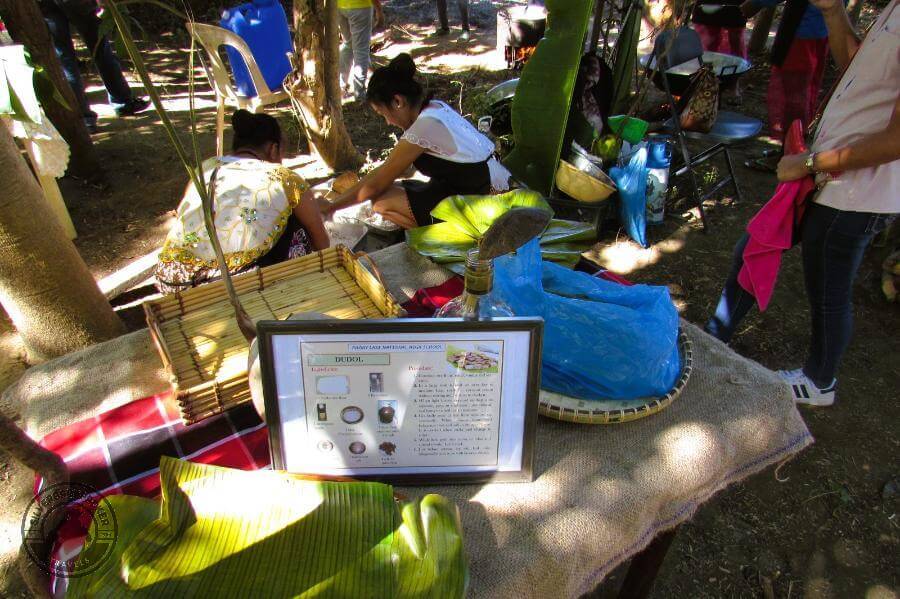
Judging the Dudol Cook-Off: A Lesson in Patience
As judges, our role was both exciting and daunting. We were to evaluate not only the taste and texture of the Dudol but also the technique, teamwork, and how well each team adhered to tradition. We soon realised that this was not just a cooking contest – it was a celebration of heritage and a showcase of each team’s pride in their craft.
Each group brought something unique to the table, from subtle variations in the sweetness of the Dudol to the rhythm of their stirring. Some teams worked in synchronised harmony, while others favoured a more relaxed approach. We watched, captivated, as they navigated the fine balance between undercooked and burnt, the creamy coconut milk thickening slowly as it absorbed the sticky rice flour.
There was something almost hypnotic about the process – the constant stirring, the smoky smell of the fire, and the quiet determination of each team member. Some of the contestants told us stories of learning the craft from their grandparents, while others took part as a way to reconnect with their roots. It was clear that this was more than a competition; it was a preservation of cultural identity.
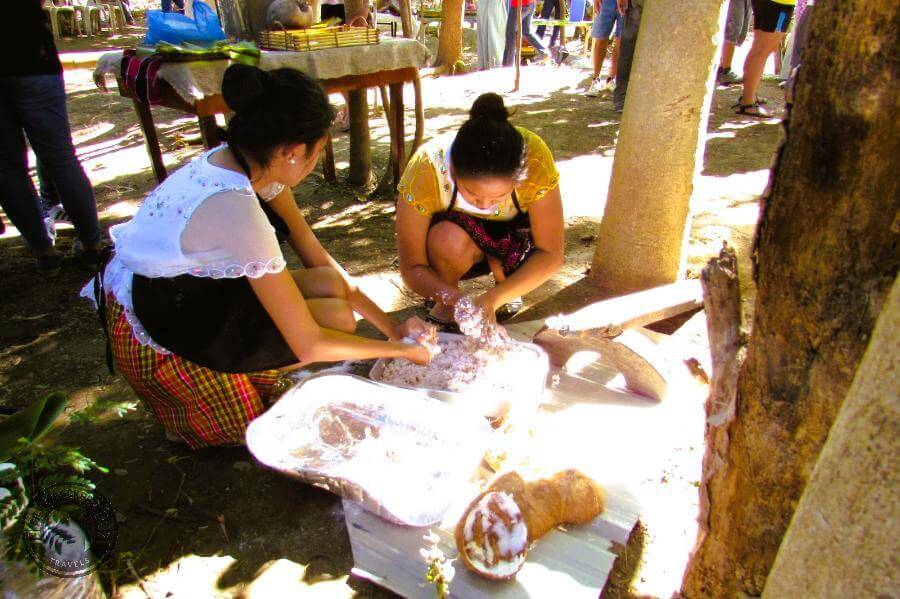

Tasting the Results
After what felt like hours of stirring, the moment we’d all been waiting for finally arrived – it was time to taste the Dudol. One by one, each team presented their creation to us, explaining their methods and any special ingredients they had used.
Tasting Dudol is an art in itself. The perfect Dudol should have a smooth, sticky texture, not too runny or too dense, with a balanced sweetness that allows the subtle flavours of the coconut and rice to shine through. We savoured each bite, noting the differences in flavour and consistency. Some versions were more caramel-like in taste, while others had a rich nuttiness from the coconut milk.
The contestants waited anxiously for our feedback, their eyes gleaming with hope and pride. We deliberated long and hard, but in the end, we were faced with a difficult decision – every team had poured their heart and soul into the competition.
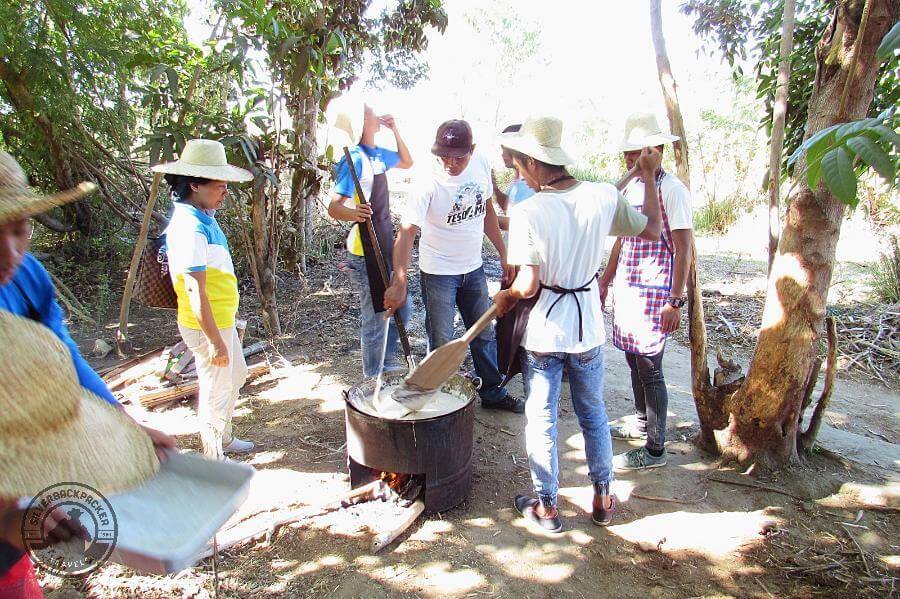
More Than Just a Contest
What struck us most about the Dudol Cook-Off was how it went beyond just cooking. It was a reflection of the Ilocano people’s deep connection to their culture, and their desire to pass down these traditions to future generations. Many of the younger participants had grown up watching their elders make Dudol, and now, they were taking the reins, ensuring that this delicious slice of their heritage would not be forgotten.
As we announced the winners, the crowd erupted in cheers and applause, but it was clear that every participant felt a sense of victory. After all, they had each contributed to keeping their culture alive and vibrant.
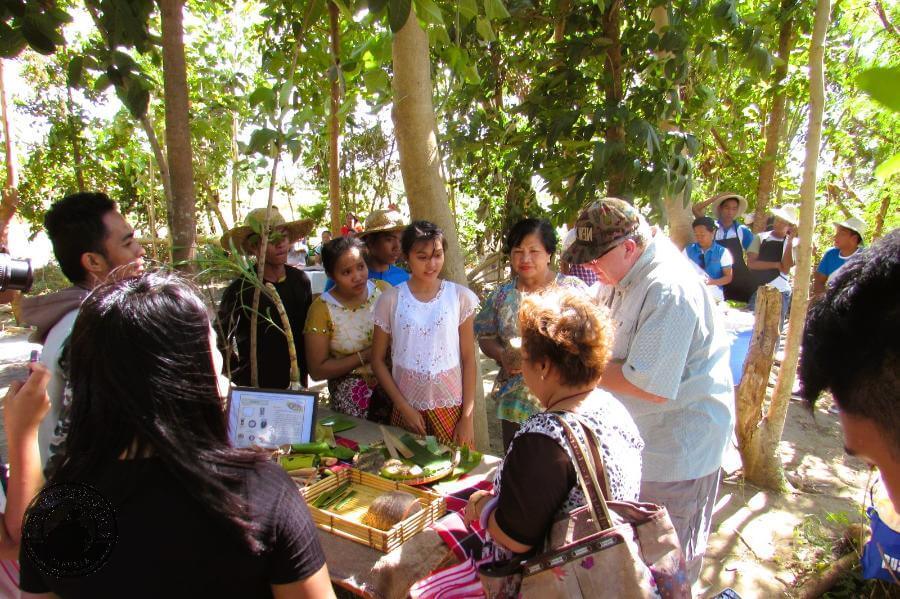
The Dudol Cook-Off
In its essence, Dudol reflects the simplicity and resourcefulness of Ilocano cuisine, turning basic ingredients into something deeply flavourful and culturally meaningful.
For us, judging the Dudol Cook-Off was an unforgettable experience. We left Paoay not only with full stomachs but with a deeper appreciation for the town’s traditions and the people who keep them alive. The Guling-Guling Festival is a celebration of life, faith, and community, and the Dudol Cook-Off is its sweetest expression.
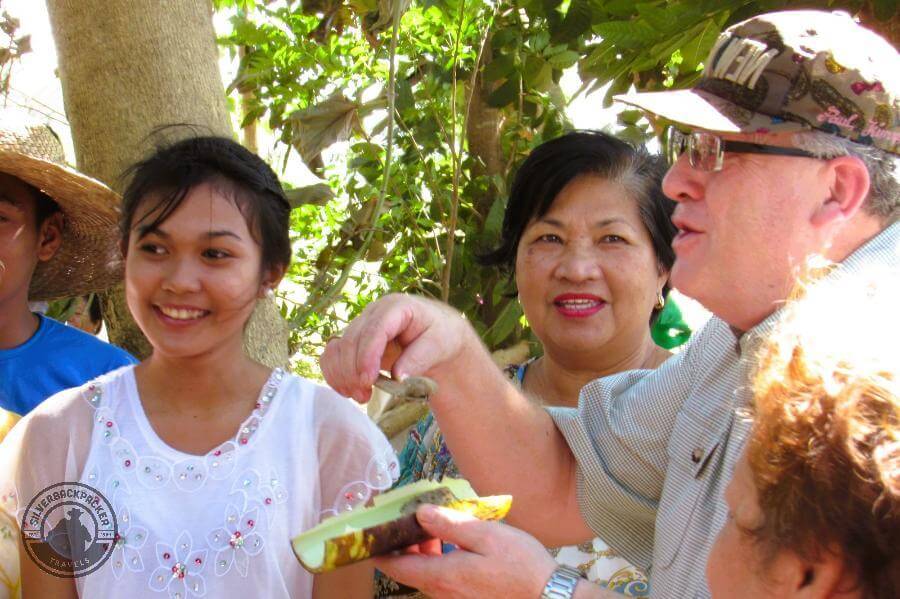

Essential Travel Guides
Dudol
A Traditional Delicacy
from Paoay
If you enjoyed reading “Dudol – A Traditional Delicacy from Paoay” then please share this page with your friends.
Leave a comment below to let me know what you liked best.
Follow Silverbackpacker on Facebook, Instagram ,Twitter and Pinterest for more travel adventures and be notified about my latest posts and updates!
Thankyou for sharing 🙂
Please Note – All blog post photos on Silverbackbacker.com are of a lower quality to enable faster loading and save you data. If you would like to buy or license higher quality copies of any of the photographs you can email us at silverbackpackertravels@gmail.com
All photographs and content on this website remain the property of Silverbackpacker.com. Images may not be downloaded, copied, reproduced or used in any way without prior written consent.
Print purchases entitle the purchaser to the ownership of the image but not to the copyrights of the image which still remain with Silverbackpacker.com even after purchase.
Follow Silverbackpacker for more of his Travels
Facebook @silverbackpacker | Instagram @silverbackpacker
Twitter @silverbackpaker | Pinterest @silverbackpaker
Audere Est Facere – Silverbackpacker.com – To Dare is To Do
Affiliate Disclaimer: Links on this website may be affiliate links that could result in us receiving compensation when you purchase a product or service from that link. You do not pay any extra fees for these items. This helps us to keep this website going. Thank you for your support.
Disclaimer | Privacy Policy | Cookie Statement © All Rights Reserved

